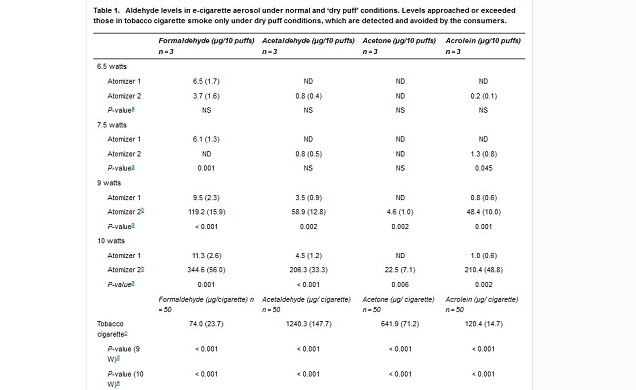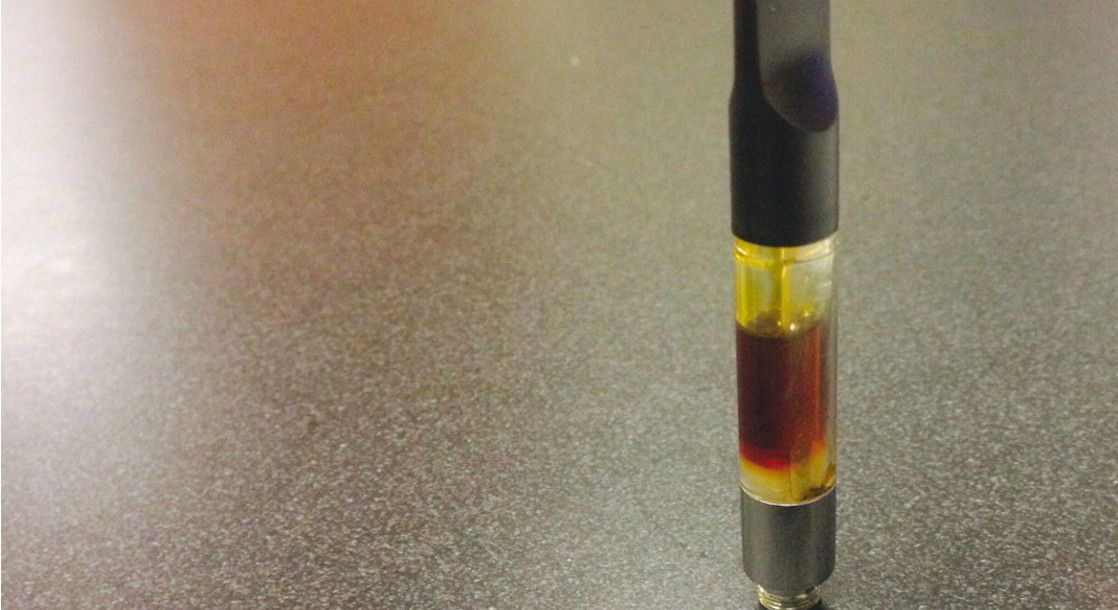
Does vaping release formaldehyde?
Well, in 2015 a medical journal reported that e-cigarettes also expose users to formaldehyde. The study didn’t just claim that e-cigs released as much formaldehyde as traditional cigarettes, but that they could release over ten times the amount. If true, this would render invalid any argument that vaping was a healthier alternative to smoking.
Do e cigarettes have formaldehyde?
Research suggests that e-cigarette vapor also contains formaldehyde, though in quantities that are usually less than what is present in cigarette smoke. Breathing secondhand and third-hand smoke indoors is a contributing factor for formaldehyde exposure as well.
What is menthol in vape juice?
What is Menthol? Menthol is a waxy crystalline organic compound that is found naturally in plants like peppermint and spearmint. When added to vape juice, menthol gives an icy feel as it activates the cold-sensing nerve receptors in the mouth and throat.
Is formaldehyde a compound or a mixture?
compound or the parent compound itself is a mixture of isomers. In any case, several of these molecules will contain formaldehyde. It is also expected that such molecules exist in the aqueous phase of water-containing cosmetics such as shampoos as well as in emulsion type cosmetics. The latest Opinion on imidazolidinyl urea dates back to 1 July ...

Can you get formaldehyde from vaping?
Formaldehyde is produced by thermal degradation in e-cigarettes. Dry puffs result from overheating and create an unpleasant taste that users avoid. In realistic conditions, formaldehyde in e-cigarettes is lower than cigarette smoke. High levels of formaldehyde are produced in unrealistic (dry puff) conditions.
How much formaldehyde is in a cigarette?
In the main stream smoke of various kinds of cigarettes the amount of formaldehyde vary between 3.4 micrograms to 8.8 micrograms/cigarette, this is equal to concentration between 2.3 to 6.1 ppm.
What is the most harmful ingredient in Vapes?
Besides nicotine, e-cigarettes can contain harmful and potentially harmful ingredients, including:ultrafine particles that can be inhaled deep into the lungs.flavorants such as diacetyl, a chemical linked to serious lung disease.volatile organic compounds.heavy metals, such as nickel, tin, and lead.
How much formaldehyde is toxic?
The concentration of formaldehyde that is immediately dangerous to life and health is 100 ppm. Concentrations above 50 ppm can cause severe pulmonary reactions within minutes. These include pulmonary edema, pneumonia, and bronchial irritation which can result in death.
Does Juul have formaldehyde?
The aerosol inhaled from e-cigarettes and JUULs is often a mixture of harmful chemicals like nicotine, formaldehyde—which is known to cause cancer—and acrolein—which is used as a weed killer and can cause irreversible lung damage.
Is vaping worse than smoking?
1: Vaping is less harmful than smoking, but it's still not safe. E-cigarettes heat nicotine (extracted from tobacco), flavorings and other chemicals to create an aerosol that you inhale. Regular tobacco cigarettes contain 7,000 chemicals, many of which are toxic.
What are 5 dangers of vaping?
Vaping has been linked to lung injury.Rapid onset of coughing.Breathing difficulties.Weight loss.Nausea and vomiting.Diarrhea.
How harmful is vaping?
The e-cigarette aerosol that users breathe from the device and exhale can contain harmful and potentially harmful substances, including: Nicotine. Ultrafine particles that can be inhaled deep into the lungs. Flavorings such as diacetyl, a chemical linked to a serious lung disease.
Is there formaldehyde in cigarette smoke?
Formaldehyde in tobacco smoke Formaldehyde is not added to tobacco products. Rather, formaldehyde is produced when additives such as sugars, sorbitol, guar gum, cellulose fibres, and carob and gum in tobacco are burnt. Smokers inhale it when they take a puff of smoke (first-hand smoke).
What are the 7000 chemicals in cigarettes?
Of the more than 7,000 chemicals in tobacco smoke, at least 250 are known to be harmful, including hydrogen cyanide, carbon monoxide, and ammonia (1, 2, 5)....Acetaldehyde.Aromatic amines.Arsenic.Benzene.Beryllium (a toxic metal)1,3–Butadiene (a hazardous gas)Cadmium (a toxic metal)Chromium (a metallic element)More items...•
What does formaldehyde do to your body?
Formaldehyde can cause irritation of the eyes, nose, and throat, even at low levels for short periods. Longer exposure or higher doses can cause coughing or choking. Severe exposure can cause death from throat swelling or from chemical burns to the lungs.
How much chemical is in a cigarette?
Is there more than nicotine and tar? Fact: There are more than 7,000 chemicals in cigarette smoke. More than 70 of those chemicals are linked to cancer.
How much formaldehyde does a vaper consume?
As Igor Burstyn did in his review, the authors of the new study compare their results with workplace limits, and conclude that vapers exceed recommendations for formaldehyde by over 200 times . This is in stark contrast with Burstyn’s conclusion that vapers only consume about 3 % of the limit per day.
How much formaldehyde is in a dry puff?
In dry puff conditions, there was 11.9 µg of formaldehyde per puff at 9 W and 34.5 µg per puff at 10 W.
What is Formaldehyde?
It's the simplest “aldehyde” chemical, with the formula CH (2)O. If you’re exposed to a significant amount of it (over 0.1 part per million), you might experience symptoms like a burning sensation in your airways and eyes, coughing and skin irritation.
What chemicals are used in vaping?
The chemicals in question are aldehydes, and formaldehyde is both the most well-known example and the one that’s been most closely tied to vaping. The issue has been aired out many times before, with studies finding high levels of formaldehyde but only in very specific circumstances that don’t represent how vapers vape in the real world. The newest study claims to avoid this trap, but whether they really did is questionable, and before jumping to conclusions, it’s best to consider all of the data rather than just one study.
What is dry puff?
Dry puffs play a central role in discussions of formaldehyde and e-cigarettes. This is where there isn’t enough liquid in the wick and the juice that is there gets “overcooked,” so to speak. This tastes horrible and is always avoided.
What is the dry puff in e-cigarettes?
The crucial factor in most discussions of formaldehyde in e-cigs is the “dry puff” phenomenon. As the name suggests, this is when there isn’t enough liquid in the wick but you try to vape. To understand this, we’ll first consider what happens during ordinary vaping.
Which chemistry has the highest formaldehyde levels?
Data taken from Gillman, et. al. (2016) – only the Protank and CE4 show very high formaldehyde levels.
How much formaldehyde does an e-cigarette produce?
Back in 2014 and 2015, a couple of studies came out claiming that e-cigarettes produce not one, not two, not three, but fifteen (15!) times the amount of formaldehyde that cigarettes do.
What is the group of people who inhale a lot of formaldehyde?
Another group of people who inhale a lot of formaldehyde are smokers. Formaldehyde is emitted in the process of burning carbon compounds, like wood, petrol, and—you guessed it—tobacco.
What would happen if a vape user had used a human?
Of course, if they had used a human, they probably would never have reached that point, because of the dreaded dry hit. Before they got anywhere close to formaldehyde, the vape user would have started choking on their own lungs.
Is vaping eliquid formaldehyde?
Your vape isn’t producing formaldehyde, either. March 20, 2018. By Emma Marsh. The claim that eliquid contains formaldehyde is about as old as vaping itself. It’s echoed by tabloids and aspiring investigative journalists looking for a big scoop about something gaining popularity in modern society.
Is vaping harmful to your health?
“Although e-liquid can be heated to a temperature which leads to a release of aldehydes, the resulting aerosol is aversive to vapers [that is, no one wants a dry hit] and so poses no health risk.”.
Is acrolein a close relative of formaldehyde?
One of them, funded by the Medicines and Healthcare products Regulatory Agency (MHRA) examined changes in levels of acrolein (a close relative of formaldehyde) in both smokers who switched to exclusively using e-cigarettes, as well as smokers who continued to smoke while also using e-liquids (so-called ‘dual users’).
Do e-cigarettes lower acrolein levels?
Those who switched exclusively to e-cigarettes displayed a significant drop in acrolein levels, which, let’s be honest, was to be expected.
Inconsistent methods produce inconsistent results
The 32 studies included in the paper are summarized in detail, including the methods used to produce and analyze the vapor, and their results.
Formaldehyde: why do so many researchers get it wrong?
The discussion section of the paper really hammers home what we’ve learned so far from studies of carbonyls like formaldehyde in e-cig vapor. Methodological problems are common, and they usually come down to the same thing: dry puffs.
Should vapers be worried about formaldehyde?
So what does this all mean for vapers? The results for modern atomizers are the most relevant ones for vapers. And the news looks good overall. Formaldehyde and other carbonyl levels are always much lower in vapes than in tobacco cigarettes when these newer devices are used (for example in this study ).
